Opening 14/09 - 14/09 - 06/11, 2021
-
Armando Andrade Tudela
-
Daniel Steegmann Mangrané
voler leggere la schiuma
voler leggere la schiuma is an impossible act, a playful and intriguing challenge.
Forms blend into one another, they transform, evolve. Their edges are undefined, you’ve got to grab them and hold them at just the right moment in order to realize what will, perhaps, remain only an intuition.
Armando Andrade Tudela and Daniel Steegmann Mangrané, connected by a long friendship and a profound exchange of reflections on art, play together with the construction of forms that, despite seeming recognizable and familiar, cannot be traced back to any specific reference point, whether natural or cultural or technological.
The gallery becomes a fluid place, where at times we are invited to enter, and others we remain trapped in a section of it, forced into a sort of short circuit that continuously makes us move, see and reconsider the space, step forwards and step backwards, to check if by chance we have missed some small detail or hint that can help us interpret the works, which seem to be so clear and familiar, yet indescribable. Perhaps, instead of straining to understand them, we should surrender ourselves to emotion and dissolve with them.
voler leggere la schiuma is a place of uncertainty, a space where we must renegotiate our relationship to reality.
The two artists’ works pose continuous questions, transcending our certainties. It questions our convictions, our wish to interpret and organize the knowable into a preestablished outline, and the artists have photographed just one possible instant of this process in continuous movement, theirs, amusing themselves then by sensing what ours might be.
The work of Armando Andrade Tudela (born in 1975 in Lima, lives and works in Lyon) explores the relationship between pop culture and the visual arts and reflects on the difficulty of communicating and translating between these two worlds that seem so distant from one another. He analyzes the hidden rhymes and the subtle discordances in our modern and recent history, by dismantling the cultural, social and historical structures.
In Thin nut’s skin a micro-natural form is transformed and changed into a presence, which is not immediately recognizable as such. It is the organic form that encloses the kernels of nuts that are transformed into rigid industrial elements, or perhaps it’s the other way around. The artist’s interest in this natural element comes from the intriguing and numerous similarities that can be found with the structure of our brains. Nature, man, and industrial processes are thus inextricably linked in a continuous process of transformation and alteration.
Strange arrangement of a skilled worker #1 e #2 are thin structures, presences that observe us.
If we look inside the openings of the enameled steel column, we can make out workers’ uniforms and various elements that are pressed inside of it. What are the consequences of the process of industrialization that we’re living through? What is the relationship between man and the production process that has as its goal the perfection of form and of the world? The worker’s body stretched out inside the minimalist column reflects the physical and formal qualities of industrial materiality, and, at the same time, alludes to the domination, to the exploitation and to the invisibility of bodies.
The work of Daniel Steegmann Mangrané (born in 1977 in Barcelona, lives and works in Rio de Janeiro) probes the relationship between culture and nature. The artist’s interest in biology has led him to introduce the natural world into his art. In his work there are numerous references to the Brazilian rainforest, which, along with geometrical shapes and abstract motifs, lead to reflections on the complex dynamics between the elements that surround us. Morphogenesis, as a form that is generated in nature and thus, by inspiration, in art as well, is the implication that links all the works together.
Metamorphing Maps is a new series of works, the first to be done in marble. In the process of creating marble, metamorphic stone that over the centuries turns into another rock, the artist’s hand intervenes. Through his gesture, Steegmann directs the raw material towards a new path, giving life to a new and unpredictable mapping and a different readability of the natural path of the stone itself.
The Kriska curtains in aluminum, ⪞ and ⪝, immediately call to mind the south of Catalonia, where the artist spent his childhood. In the repetition of a typically industrial manufacturing geometry, the artist’s touch bursts through and brings about a new sense of space. The legible, but unpronounceable, title alludes to the elements that make up the work and recall their choreographic arrangement. The installation explores issues of corporality and immateriality, of the relation between fluidity and interruption, and of the dematerialization of space. In the same way the work geometric nature/biology examines the dichotomy that governs the world: the delicate relationship between the organic and the geometric, between nature and human creation. A small branch divided lengthwise tangles up its organic form with the pure geometry of the elastic ropes that hold it in tension, suggesting a delicate meeting of natural and artificial forms.
voler leggere la schiuma is an impossible act, a playful and intriguing challenge.
Forms blend into one another, they transform, evolve. Their edges are undefined, you’ve got to grab them and hold them at just the right moment in order to realize what will, perhaps, remain only an intuition.
Armando Andrade Tudela and Daniel Steegmann Mangrané, connected by a long friendship and a profound exchange of reflections on art, play together with the construction of forms that, despite seeming recognizable and familiar, cannot be traced back to any specific reference point, whether natural or cultural or technological.
The gallery becomes a fluid place, where at times we are invited to enter, and others we remain trapped in a section of it, forced into a sort of short circuit that continuously makes us move, see and reconsider the space, step forwards and step backwards, to check if by chance we have missed some small detail or hint that can help us interpret the works, which seem to be so clear and familiar, yet indescribable. Perhaps, instead of straining to understand them, we should surrender ourselves to emotion and dissolve with them.
voler leggere la schiuma is a place of uncertainty, a space where we must renegotiate our relationship to reality.
The two artists’ works pose continuous questions, transcending our certainties. It questions our convictions, our wish to interpret and organize the knowable into a preestablished outline, and the artists have photographed just one possible instant of this process in continuous movement, theirs, amusing themselves then by sensing what ours might be.
The work of Armando Andrade Tudela (born in 1975 in Lima, lives and works in Lyon) explores the relationship between pop culture and the visual arts and reflects on the difficulty of communicating and translating between these two worlds that seem so distant from one another. He analyzes the hidden rhymes and the subtle discordances in our modern and recent history, by dismantling the cultural, social and historical structures.
In Thin nut’s skin a micro-natural form is transformed and changed into a presence, which is not immediately recognizable as such. It is the organic form that encloses the kernels of nuts that are transformed into rigid industrial elements, or perhaps it’s the other way around. The artist’s interest in this natural element comes from the intriguing and numerous similarities that can be found with the structure of our brains. Nature, man, and industrial processes are thus inextricably linked in a continuous process of transformation and alteration.
Strange arrangement of a skilled worker #1 e #2 are thin structures, presences that observe us.
If we look inside the openings of the enameled steel column, we can make out workers’ uniforms and various elements that are pressed inside of it. What are the consequences of the process of industrialization that we’re living through? What is the relationship between man and the production process that has as its goal the perfection of form and of the world? The worker’s body stretched out inside the minimalist column reflects the physical and formal qualities of industrial materiality, and, at the same time, alludes to the domination, to the exploitation and to the invisibility of bodies.
The work of Daniel Steegmann Mangrané (born in 1977 in Barcelona, lives and works in Rio de Janeiro) probes the relationship between culture and nature. The artist’s interest in biology has led him to introduce the natural world into his art. In his work there are numerous references to the Brazilian rainforest, which, along with geometrical shapes and abstract motifs, lead to reflections on the complex dynamics between the elements that surround us. Morphogenesis, as a form that is generated in nature and thus, by inspiration, in art as well, is the implication that links all the works together.
Metamorphing Maps is a new series of works, the first to be done in marble. In the process of creating marble, metamorphic stone that over the centuries turns into another rock, the artist’s hand intervenes. Through his gesture, Steegmann directs the raw material towards a new path, giving life to a new and unpredictable mapping and a different readability of the natural path of the stone itself.
The Kriska curtains in aluminum, ⪞ and ⪝, immediately call to mind the south of Catalonia, where the artist spent his childhood. In the repetition of a typically industrial manufacturing geometry, the artist’s touch bursts through and brings about a new sense of space. The legible, but unpronounceable, title alludes to the elements that make up the work and recall their choreographic arrangement. The installation explores issues of corporality and immateriality, of the relation between fluidity and interruption, and of the dematerialization of space. In the same way the work geometric nature/biology examines the dichotomy that governs the world: the delicate relationship between the organic and the geometric, between nature and human creation. A small branch divided lengthwise tangles up its organic form with the pure geometry of the elastic ropes that hold it in tension, suggesting a delicate meeting of natural and artificial forms.
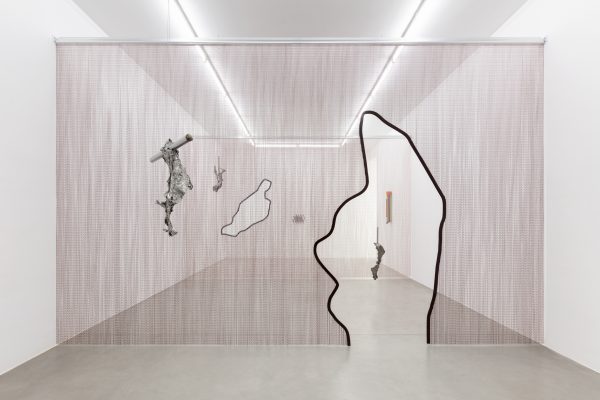 ⪞, 2021Kriska aluminium curtains and laser-cut, powder-coated steel frames
⪞, 2021Kriska aluminium curtains and laser-cut, powder-coated steel frames
355×560 cm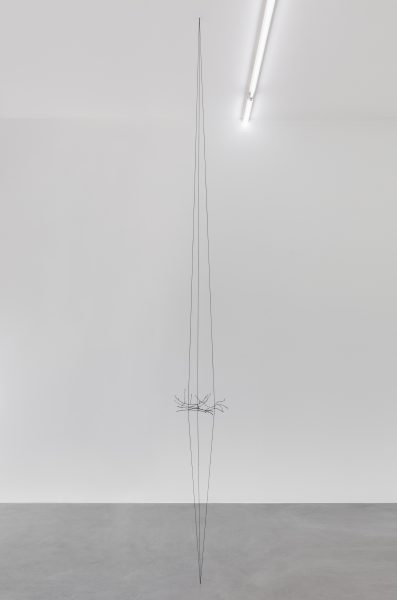 geometric nature / biology, 2021branch, elastic cord
geometric nature / biology, 2021branch, elastic cord
418×40×35 cm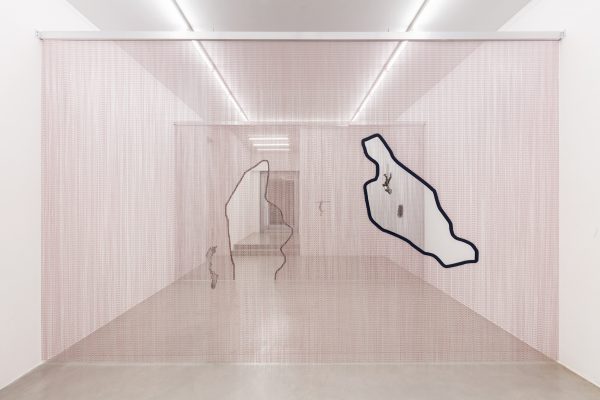 ⪝, 2021Kriska aluminium curtains and laser-cut, powder-coated steel frames
⪝, 2021Kriska aluminium curtains and laser-cut, powder-coated steel frames
355×565 cm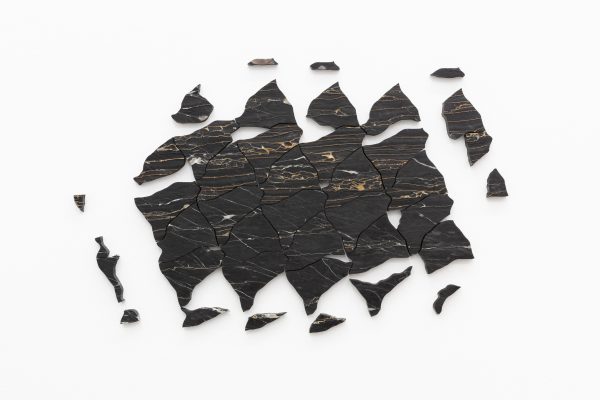 Metamorphing map, 2021marble
Metamorphing map, 2021marble
38×61×1,5 cm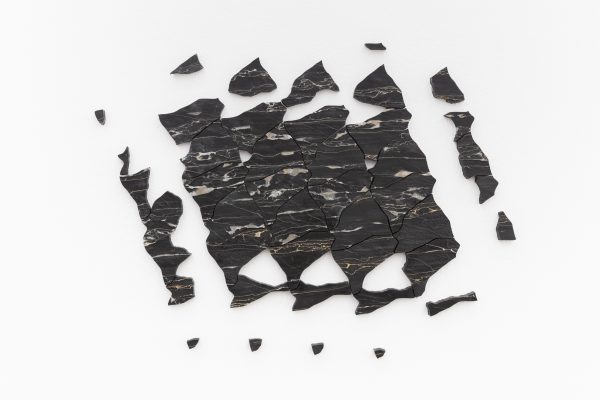 Metamorphing map, 2021marble
Metamorphing map, 2021marble
38×61×1,5 cm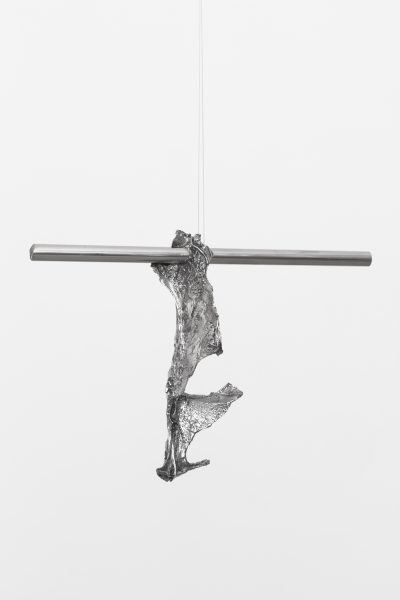 Thin nut’s skin #1, 2021Stainless steel
Thin nut’s skin #1, 2021Stainless steel
44×65×18 cm
Edition 1/3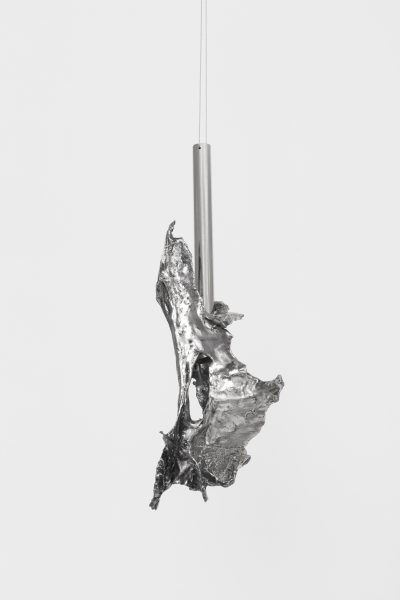 Thin nut’s skin #3, 2021Stainless steel
Thin nut’s skin #3, 2021Stainless steel
58×20×24 cm
Edition 1/3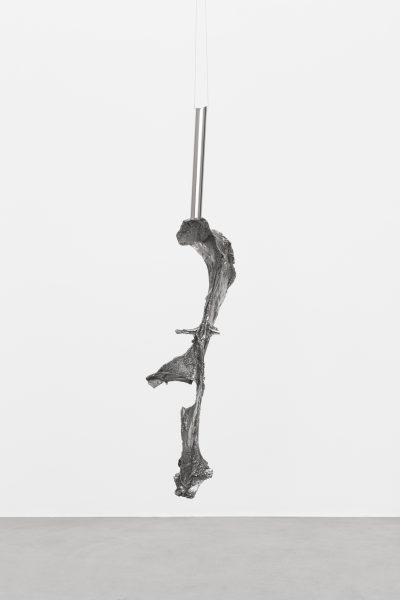 Thin nut’s skin #2, 2021Stainless steel
Thin nut’s skin #2, 2021Stainless steel
98×25×25 cm
Edition 1/3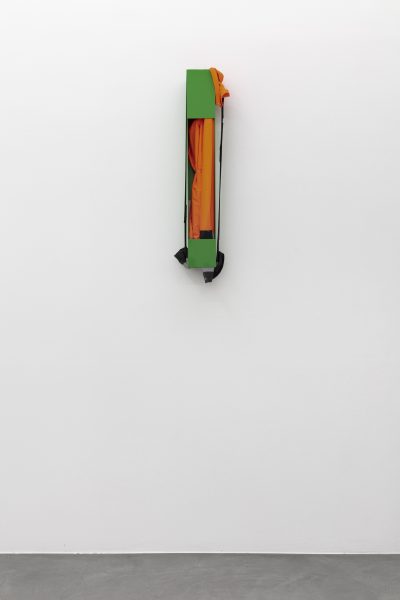 Strange arrangement of a skilled worker #2, 2021steel, fabric and velcro
Strange arrangement of a skilled worker #2, 2021steel, fabric and velcro
90×13×13 cm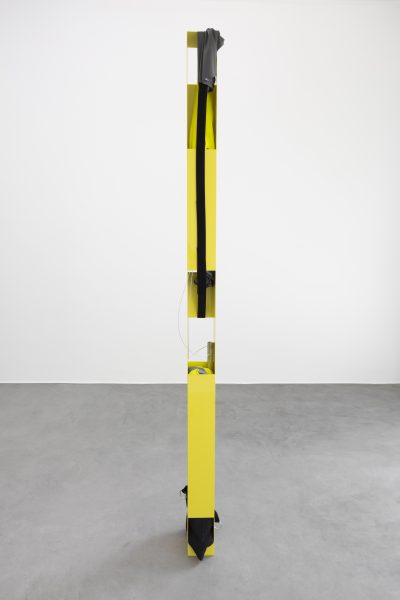 Strange arrangement of a skilled worker #1, 2021worker #1, 2021
Strange arrangement of a skilled worker #1, 2021worker #1, 2021
steel, stainless steel, fabric and velcro
250×13×13 cm





































